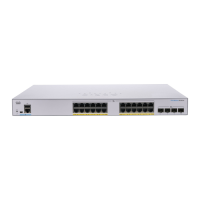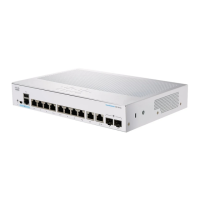In general, except for the CBS350-48XT-4X, all CBS350 switches that support stacking and have designated
uplink ports in their PID can stack natively among themselves, and those that do not have uplink ports,
including the CBS350-48T-4X can stack, among themselves, in native mode as well. The hybrid mode staking
comes into play only when mixing these two blocks, uplink supporting devices and non-uplink supporting
devices. So. knowing the exact PID of a given switch is so crucial when it comes to stacking mode
determination. The CBS350-48T-4X, although has 4X at the end of the PID that should designate this as
supporting an uplink, it is not the case, this 4X designation in this switch does not indicate uplink, instead,
they are network port (downlink port) as are the other ports in the switch.
Changing stacking mode from Native to Hybrid will force a switch to reboot and most of its settings in its
startup configuration will reset to default; in the other hand, changing the stacking mode from Hybrid to Native
will force the unit to reboot, but the settings will not reset back to default.
Hybrid stackCBS350 “10G network port
SKUs”
CBS350 “10G uplink port
SKUs”
Feature
Not SupportedSupportedNot SupportedOOB port
Per SKU and port type
behavior
Per SKU and port type
behavior
Per SKU and port type
behavior
Green Settings (Short
reach and Energy Detect)
16K32K or 64K16KMAC table size
2K4K2KNumber of Multicast
groups
1K- reserved2K- reserved1K- reservedNumber of ACEs
supported
9927392992Total number of IP entries
1K – reserved8K – reserved1K – reservedARP table size
106200106Max number of IPv6
interfaces
400 seconds630 seconds400 secondsMax MAC table aging
Not supportedSupportedNot supportedIPv6 Manual Tunnel/ 6tp4
tunnel/ ISATAP routing
tunnel
Per SKU typeNot supportedSupported on specific
SKUs
PoE support
0320Default number of VLAN
Mapping entries
On VLAN 1On OOBOn VLAN 1Default IP address
Get To Know Your Switch
7
Get To Know Your Switch
Feature Support on Hybrid Mode
